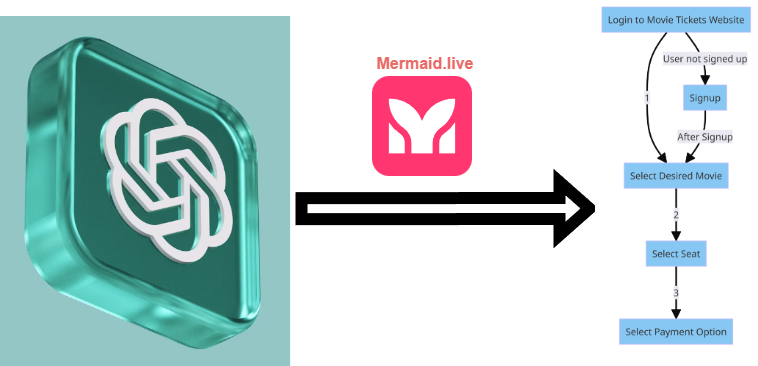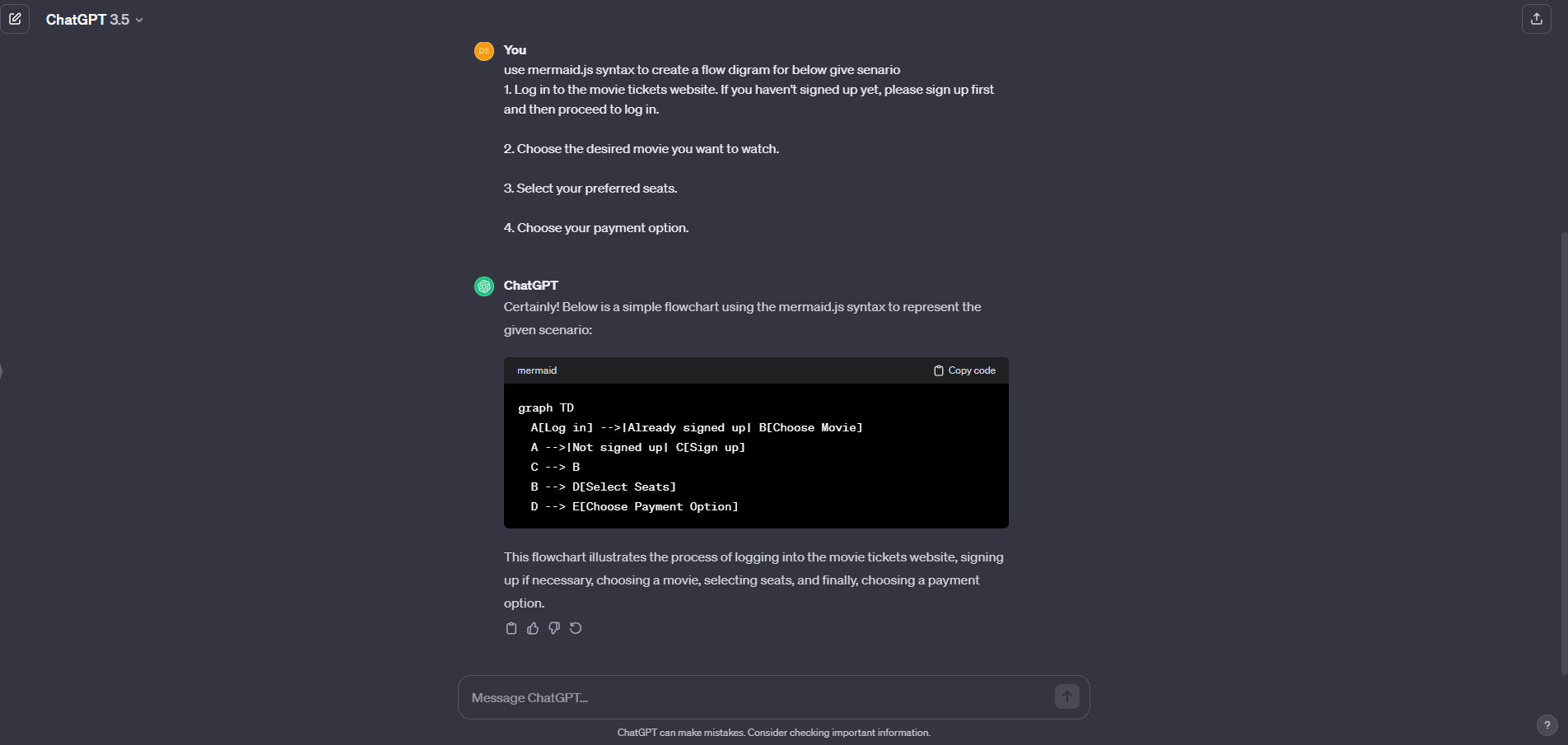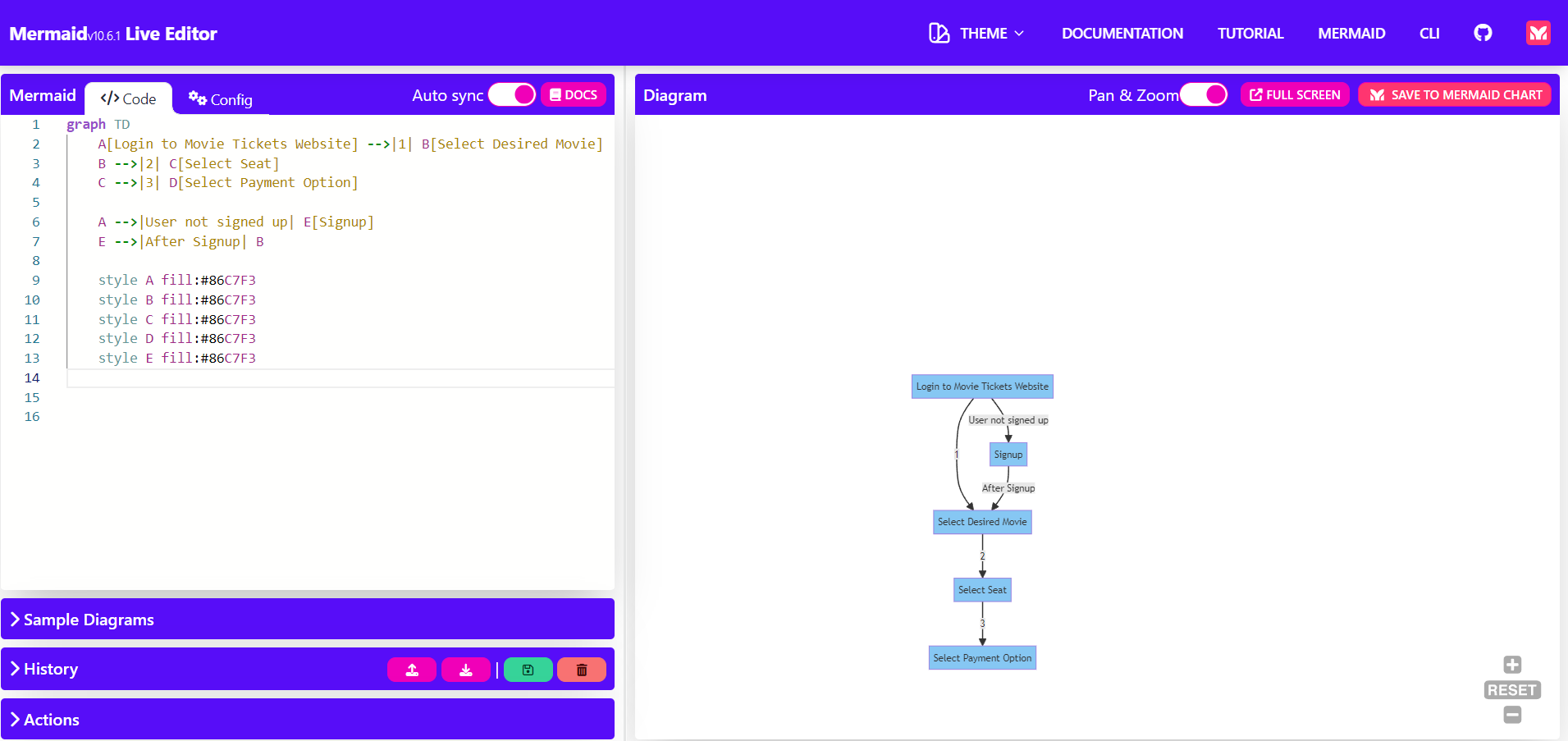From Words to Flowcharts: Unlocking ChatGPT's Creative Power with Mermaid.js
 Devendra Sahu
Devendra Sahu
Flowcharts are invaluable tools for visualizing processes, decision trees, and workflows. Traditionally, creating flowcharts involved using specialized software or drawing tools. However, with the rise of Mermaid.js, a JavaScript library for generating diagrams and flowcharts, the process has become more accessible and intuitive.
What is Mermaid.js?
Mermaid.js is an open-source library that allows you to generate diagrams and flowcharts using a simple text-based syntax. It supports various diagram types, including flowcharts, sequence diagrams, Gantt charts, and more. With Mermaid.js, you can describe your diagram in a human-readable format, making it easy to create and maintain visual representations of complex processes.
Creating a Flow Diagram with Mermaid.js - Step by Step Guide
Step 1: Go to the Chart GPT
Start by accessing the Chart GPT platform. This is where you'll be generating your flowchart using Mermaid.js syntax.
Step 2: Provide Prompt
Give the following prompt to guide the creation of a flow diagram using Mermaid.js:
Prompt Example: "Use Mermaid.js syntax to create a flow diagram for the following scenario:
Log in to the movie tickets website. If you haven't signed up yet, please sign up first and then proceed to log in.
Choose the desired movie you want to watch.
Select your preferred seats.
Choose your payment option."
This prompt will instruct the model to generate a Mermaid.js flow diagram based on the provided scenario.

Step 3: Interpret the Output
Once the model processes the prompt, it will generate a Mermaid.js flowchart. Interpret the output and use it in your project documentation or presentation.
Step 4: Customize as Needed
Feel free to customize the generated Mermaid.js flowchart based on your specific requirements.
Step 5:
After obtaining the Mermaid.js code from the generated output, follow these steps:
Go to the Mermaid Live Editor: Visit the Mermaid Live Editor website at [https://mermaid.live/].
Paste the Code: Copy the Mermaid.js code generated by Chart GPT and paste it into the text editor on the Mermaid Live Editor.

Visualize Your Flowchart: Once you paste the code, the live editor will automatically render the flowchart. Visualize and interact with your flowchart in real-time.
Adjust and Customize (Optional): Use the editor's features to adjust styling, colors, and layout as needed. Mermaid Live Editor provides a user-friendly interface for tweaking the appearance of your flowchart.
Download or Share (Optional): If desired, you can download the generated flowchart as an image or share the live editor link with others to collaborate on the diagram.
Conclusion
Mermaid.js simplifies the process of creating flowcharts by offering a text-based syntax that is easy to write and update. Its versatility, integration with Markdown, and simplicity make it a powerful tool for anyone needing to visualize processes and workflows.
Whether you're a developer documenting your code, a project manager illustrating workflows, or a student creating visual aids for a presentation, Mermaid.js provides an accessible and efficient way to generate professional-looking flowcharts. Try it out in your next project and experience the ease of creating and maintaining visual representations of your processes.
Happy diagramming!
Subscribe to my newsletter
Read articles from Devendra Sahu directly inside your inbox. Subscribe to the newsletter, and don't miss out.
Written by

Devendra Sahu
Devendra Sahu
Full-Stack .NET Developer & Azure Advocate: Building robust web applications and cloud infrastructure with C#, ASP.NET MVC, and Azure services. Sharing my knowledge and love for technology on Hashnode.